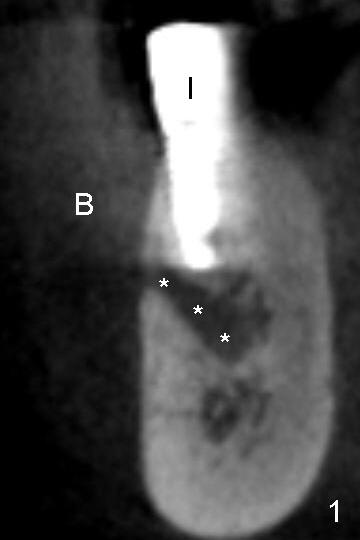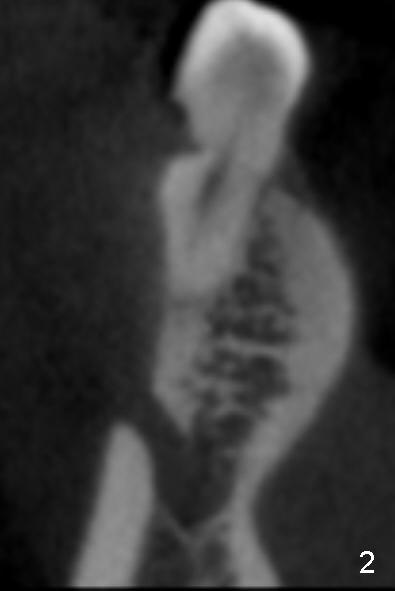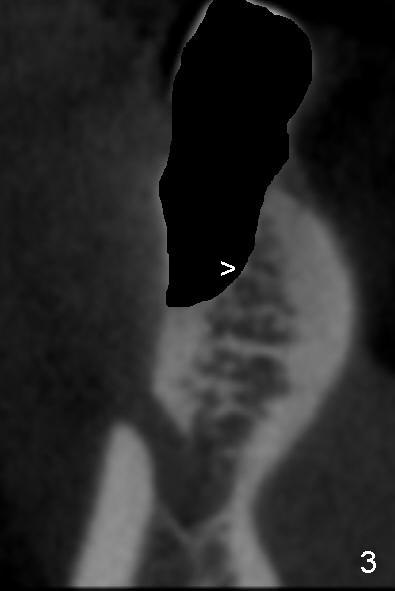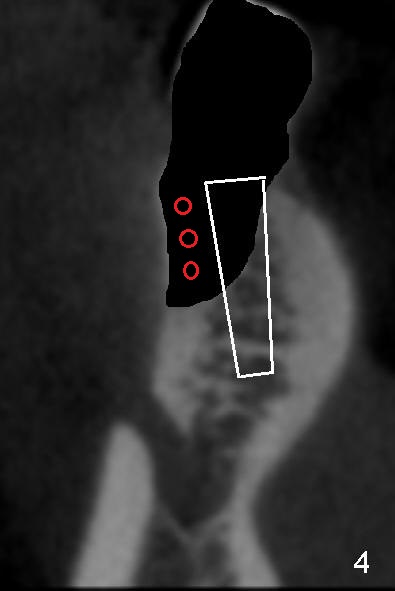



 |
 |
 |
 |
Do Not Sacrifice Safety for Restoration
Paresthesia appears following delayed implantation at the site of the lower right 2nd premolar. The implant's trajectory is good for restoration (Fig.1: I), similar to a natural tooth at the same area (Fig.2). The drawback is that when the implant is placed too buccally, it is close to the mental canal (Fig.1 *). In spite of socket preservation, the bone height is compromised (compare Fig.1,2).
To reduce chance of nerve injury, immediate implant should be done as often as possible. Immediately after extraction, osteotomy is created in the middle of the lingual slope of the socket (Fig.3 >). Since the bone height has yet to be compromised, moderate length of an implant should be able to achieve primary stability. The apex of the implant (Fig.4 white outline) should be far away from the mental canal. Bone graft in the buccal socket (red circles) will make it possible to form 2 mm bone around the implant. The trajectory of the immediate implant should be able to be corrected by placement of an angled abutment if needed.
Return to Lower Bicuspid Immediate
Implant
Xin Wei, DDS, PhD, MS 1st edition 10/21/2014, last revision 01/19/2018